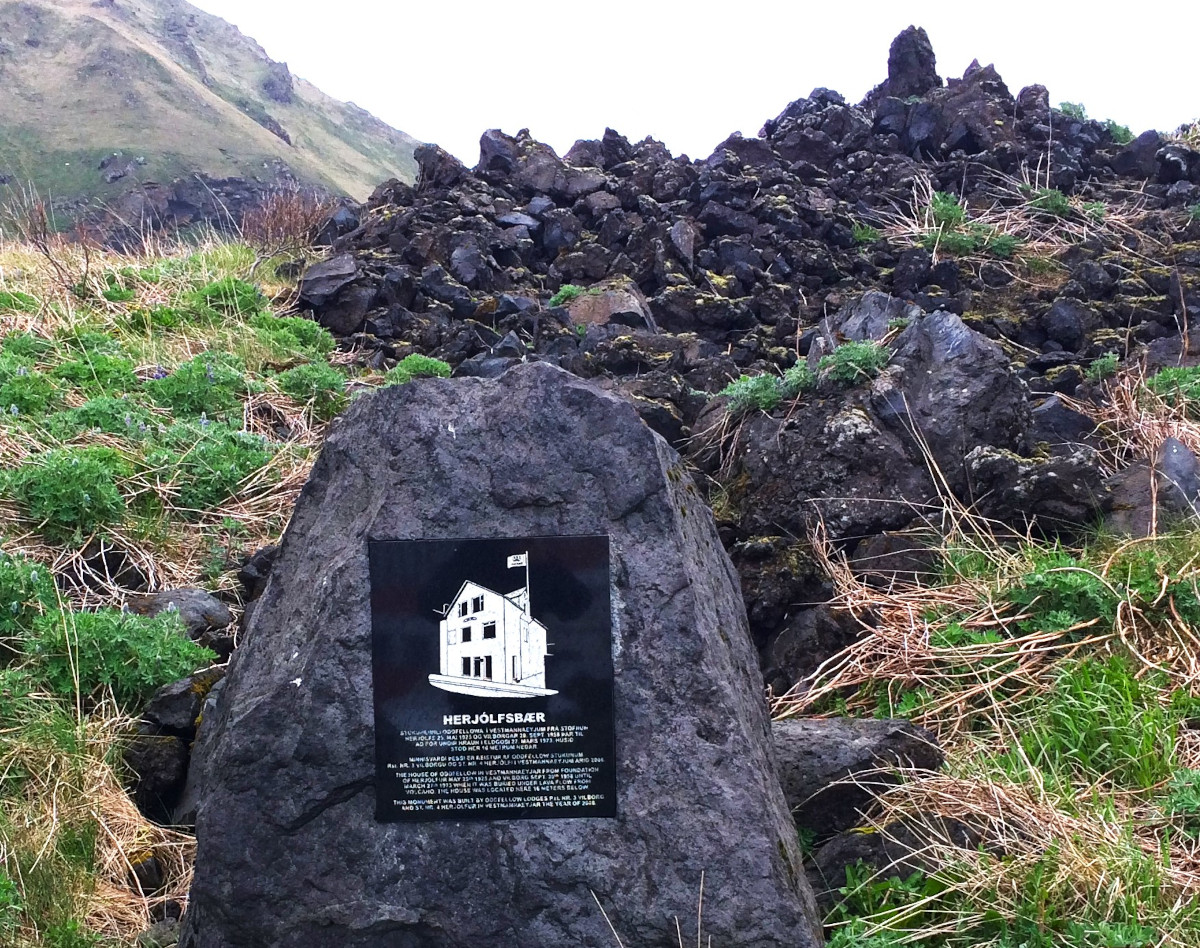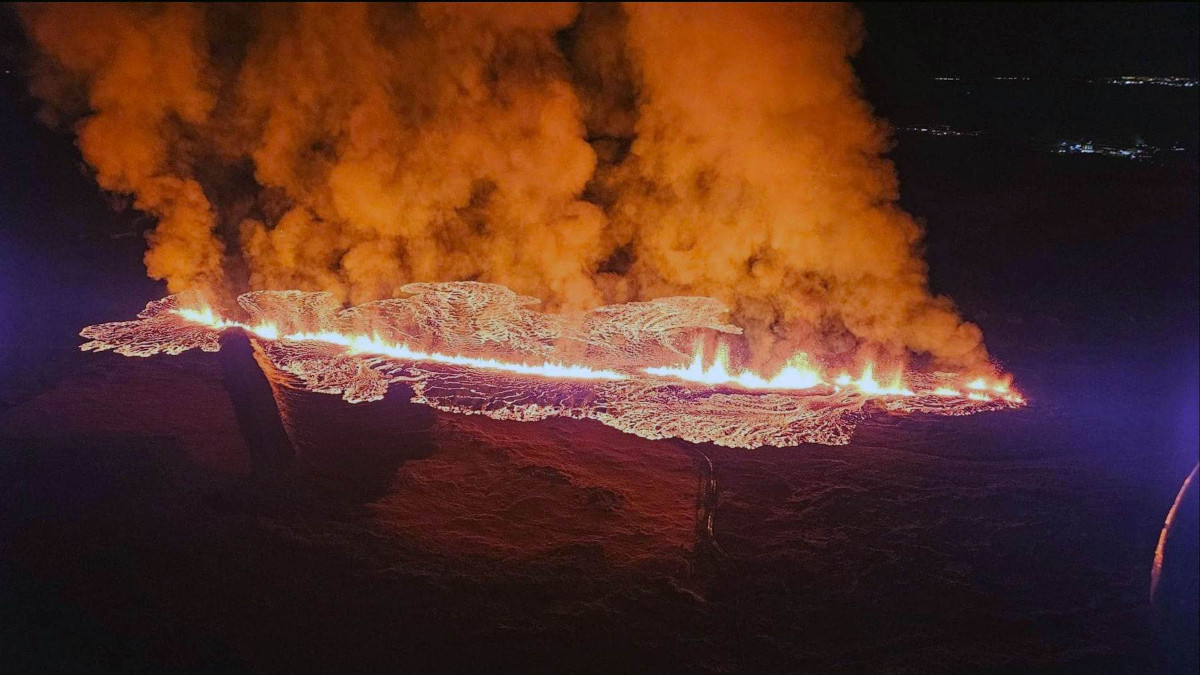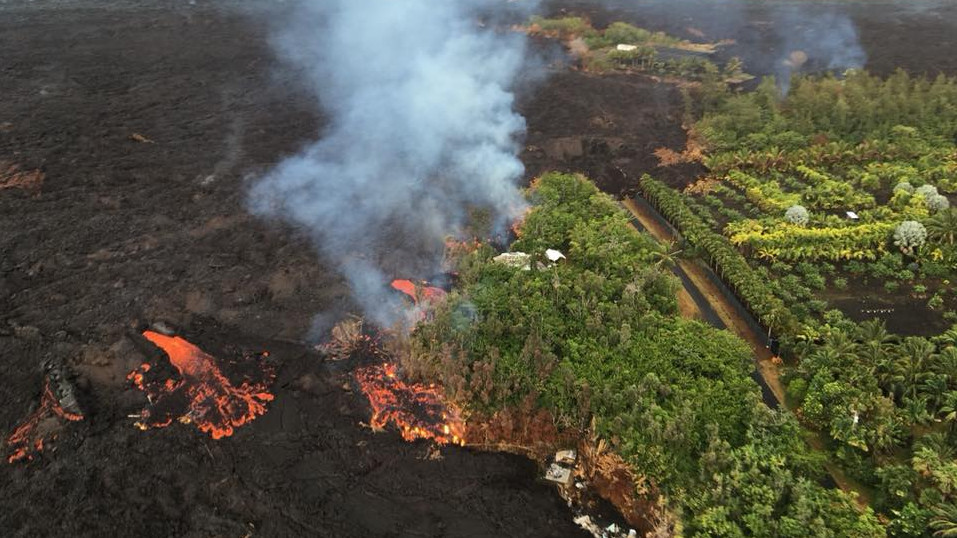
USGS: “A stone marker over a house destroyed by a lava flow from the 1973 eruption on the island of Heimaey, Iceland.”
(BIVN) – Volcanoes on the island of Hawaiʻi are not erupting, but activity elsewhere on Earth serves as a reminder of past events on the Big Island.
From this week’s Volcano Watch article written by U.S. Geological Survey Hawaiian Volcano Observatory scientists and affiliates:
Lava flows slowly approaching houses. Authorities evacuating neighborhoods. The tension of residents not knowing when, or if, they can return to their homes.
These scenes may bring up difficult memories for Island of Hawaiʻi residents whose lives were affected by the destructive 2018 eruption of Kīlauea. During the four months of that eruption on the lower East Rift Zone, hundreds of homes were destroyed, and thousands of lives were disrupted.
But this scenario also occurred just this month, in Iceland. A new eruption on the Reykjanes Peninsula began on January 14, threatening the small fishing village of Grindavik. Fissures opened just a few hundred meters (yards) upslope of the town, sending a lava flow into residential areas. The flow inched into the edge of town and destroyed several houses.
By the next day, the flow front had stalled, and the eruption was ending. But the magmatic system has been reinflating beneath the surface, indicating another eruption could happen in the near future.
This isn’t the first time that Iceland has dealt with destructive lava flows. In 1973, an eruption sent lava through the village on the island of Heimaey, with lava creeping into the nearby bay. That eruption was, perhaps, most notable for the use of water cannons to try to cool the flow and arrest its advance before it blocked the entrance to the fishing harbor.
Nearly half of the town was destroyed and today, a house “graveyard” is present on the surface of the 1973 lava flow that covered the town, with stone markers showing the location of each owner’s house accompanied by a small sketch of the residence.
The eruption this month in Iceland hasn’t been the only recent eruptive activity there. Over the last three years, five different eruptions have occurred on the Reykjanes Peninsula. Most of these have been a safe distance from residential areas. Thousands of tourists were drawn to the up-close views of spectacular lava fountaining.
Unfortunately, the geologic record suggests that more eruptions could occur in the near future on the peninsula. The last eruptive phase in this part of Iceland occurred 800 years ago, but eruptive phases have lasted decades or longer. This suggests that the past five eruptions may be just the start of activity that could persist for years. This no doubt adds to the anxiety of Grindavik residents.



by Big Island Video News8:04 am
on at
STORY SUMMARY
HAWAIʻI - Scientists compare the January 14th eruption on the Reykjanes Peninsula to the 2018 eruption of Kīlauea on the lower East Rift Zone.